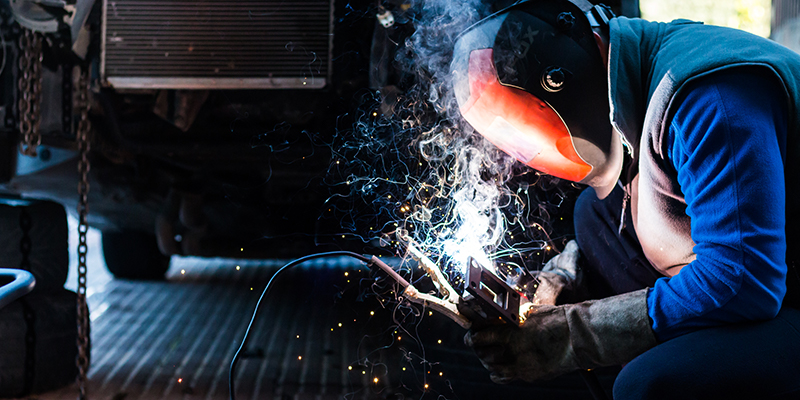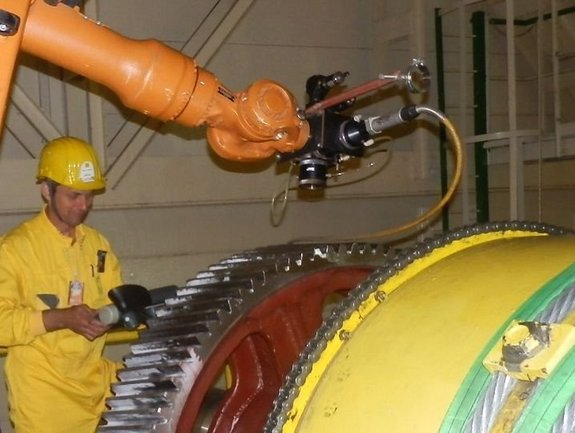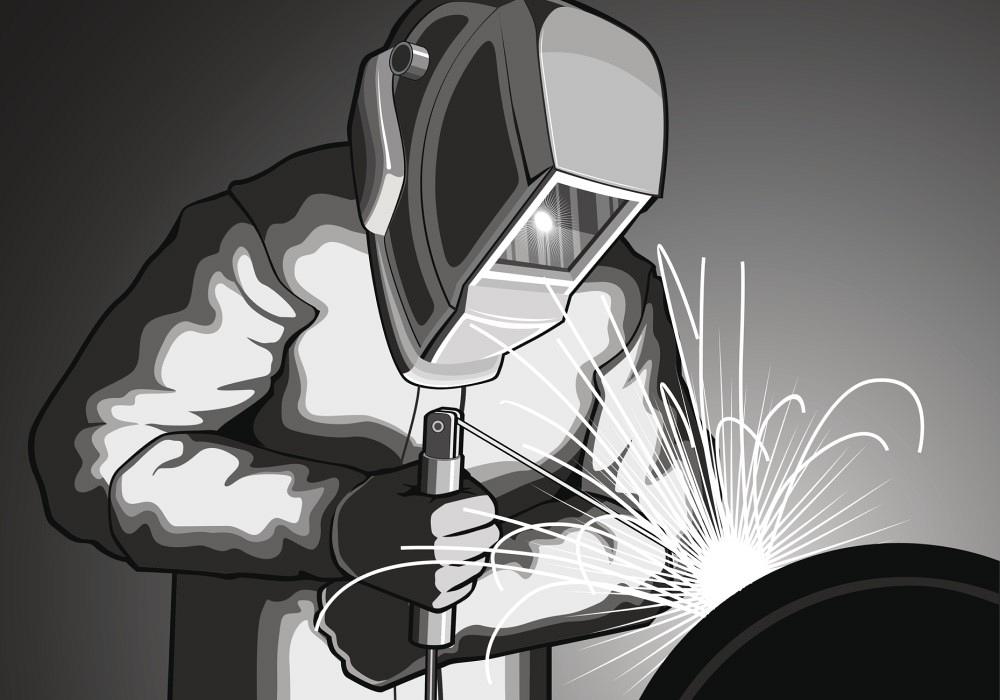Usual Welding Fixing Issues and Exactly How to Address Them Efficiently
Welding repair work usually experience a variety of problems that can endanger the honesty of the end product. Common issues consist of poor infiltration, porosity, and misalignment, amongst others. Each defect presents unique obstacles that call for particular approaches for resolution. Understanding these problems is essential for welders aiming to improve their skills and outcomes. This conversation will check out these usual welding repair issues and efficient methods to resolve them.
Insufficient Infiltration
Insufficient penetration happens when the weld metal fails to fully fuse with the base material, leading to weak joints and prospective structural failings. This issue often stems from not enough heat input, inaccurate electrode angle, or inappropriate welding rate. Welders might run into insufficient infiltration as a result of a miscalculation of the necessary parameters for a particular product thickness or kind. Additionally, contamination on the base material's surface area can hinder effective bonding, aggravating the problem. To address poor infiltration, welders should ensure ideal settings on their tools and preserve a clean job surface area. Normal evaluation of welds is recommended to determine any kind of shortages early, permitting timely modifications and the avoidance of endangered structural honesty in welded assemblies.
Porosity
Porosity is a typical flaw in bonded joints that manifests as tiny gas bubbles caught within the weld metal. This defect can endanger the integrity of the weld, causing decreased strength and potential failing under anxiety. Belgrade Welding. Porosity commonly arises from contamination, dampness, or incorrect welding methods, which enable gases to get away right into the molten weld swimming pool. To address porosity, welders must assure correct surface area preparation, preserve a tidy functioning setting, and utilize appropriate welding specifications. Additionally, picking the best filler material and protecting gas can reduce gas entrapment. Regular evaluation and screening of welds can aid identify porosity early, guaranteeing prompt restorative actions are taken, thus preserving the top quality and integrity of the welded structure
Misalignment
Misalignment in welding can emerge from numerous elements, consisting of improper configuration and thermal development. Comprehending the origin is vital for reliable resolution. A number of modification techniques are offered to realign parts and guarantee structural honesty.
Reasons for Imbalance
Welding misalignment often stems from a range of underlying issues that can endanger architectural honesty. One key cause is incorrect fit-up of components prior to welding, which can lead to voids and irregular surfaces. Variants in thermal development during the welding process can additionally result in distortion, specifically if the materials being joined have various coefficients of growth. Additionally, poor fixturing and securing might stop working to hold components firmly in position, resulting in movement throughout welding. Badly conserved devices, including welding makers and tools, might present inconsistencies in the weld grain, further adding to imbalance. Driver error, stemming from inadequate training or experience, can likewise play a substantial function in developing misaligned welds.

Adjustment Techniques Available
Resolving misalignment efficiently needs a mix of restorative methods tailored to the specific concerns at hand. One typical method is making use of components or jigs to hold parts in the right placement during welding, making sure consistent alignment. Additionally, pre-heating the materials can help in reducing distortion and improve fit-up. For substantial misalignment, mechanical adjustment strategies, such as making use of hydraulic jacks or clamps, can be used to fix the setting prior to welding. Post-weld warmth therapy might likewise be required to ease stress and anxieties triggered by imbalance. Ultimately, careful assessment and change throughout the configuration stage can stop misalignment problems from becoming considerable issues, advertising a smoother welding process and boosting general structural honesty.
Distortion
Distortion is a typical difficulty in welding that can occur from numerous elements, consisting of uneven cooling and heating. Comprehending the reasons for distortion is important for executing effective avoidance methods. Resolving this concern not just enhances architectural honesty yet likewise improves the general high quality of the weld.
Reasons for Distortion
When subjected to the intense warm of welding, products frequently go through modifications that can cause distortion. This sensation largely emerges from thermal expansion and contraction throughout the welding process. As the weld area warms up, the material expands; upon air conditioning, it acquires, which can create internal tensions. On top of that, uneven home heating throughout a workpiece can intensify these stress and anxieties, leading to warping or flexing. The kind of material also plays a considerable role; metals with varying thermal conductivity and coefficients of expansion might respond in different ways, bring about unforeseeable distortions. Furthermore, inadequate joint style and inadequate fixturing can add to imbalance during welding, enhancing the probability of distortion. Understanding these reasons is vital for effective welding repair work and avoidance methods.
Avoidance Techniques
Reliable avoidance techniques for distortion during welding focus on managing warm input and making certain correct joint design. Maintaining a regular warm input assists to decrease thermal development and contraction, which can bring about distortion. Using methods such as pre-heating the work surface can likewise reduce the temperature level slope, advertising consistent heating. In addition, selecting appropriate joint layouts, such as T-joints or lap joints, can enhance stability and lower tension focus. Carrying out proper fixturing to protect the work surfaces in position even more aids in keeping alignment during the welding process. Lastly, staggered welding sequences can disperse heat a lot more evenly, avoiding localized distortion. By using explanation these methods, welders can substantially decrease the probability of distortion and enhance the overall top quality of their welds.
Splitting
Breaking is an usual problem experienced in welding repair work, typically resulting from numerous factors such as inappropriate air conditioning rates, product option, or inadequate joint preparation. The incident of cracks can substantially jeopardize the stability of the weld, bring about prospective failings during procedure. To resolve this concern, welders must first analyze the origin, making certain that materials are suitable and properly selected for the certain application. Furthermore, managing the cooling rate throughout the welding procedure is crucial; rapid cooling can cause stress and anxiety and lead to breaking. Correct joint layout and preparation likewise contribute to reducing the danger. Executing these methods can enhance weld high quality and toughness, eventually minimizing the likelihood of cracking in completed weldments.

Insufficient Blend
A significant problem in welding repair services is insufficient fusion, which occurs when the weld steel does not appropriately bond with the base material or previous weld passes - Montana Mobile Welding and Repair Belgrade Fabrication. This defect can bring about weak points in the joint, potentially jeopardizing the stability of the welded structure. Variables adding to insufficient combination consist of not enough warmth input, inappropriate welding technique, and contamination of the surfaces being signed up with. To resolve this issue efficiently, welders need to guarantee proper pre-weld cleaning and surface preparation, along with change their welding parameters to attain sufficient penetration and blend. Normal assessment during the welding process can also assist recognize insufficient blend early, enabling prompt rehabilitative procedures to boost the total high quality of the weld
Overheating
While welding fixings can boost structural stability, overheating provides a significant obstacle that can lead to material deterioration. Too much heat throughout welding can modify the mechanical residential properties of metals, causing reduced toughness, raised brittleness, and warping. This sensation is particularly critical in high-stress applications where structural dependability is critical. Recognizing getting too hot can entail visual inspections for staining my explanation or distortion, along with keeping track of temperature during the welding process. To alleviate the dangers related to overheating, welders must use proper techniques, such as regulating heat input, adjusting travel rate, and utilizing ideal filler products. Furthermore, executing pre- and post-weld warmth treatments can aid bring back material residential properties and improve the overall high quality of the repair work, making certain long-lasting performance and safety and security.
Regularly Asked Inquiries
What Are the Common Indications of a Welding Flaw?

How Can I Evaluate My Welds for Quality?
To check welds for top quality, one can make use of aesthetic evaluations, ultrasonic screening, and radiographic methods. Each technique guarantees architectural honesty, identifies flaws, and verifies adherence to defined criteria, ultimately enhancing the reliability of the welded joints.
What Safety and security Safety Measures Should I Take While Welding?
When welding, one need to prioritize safety and security by putting on proper personal safety tools, ensuring correct air flow, securing combustible products away, preserving a tidy work space, and recognizing surroundings to avoid accidents and injuries.
Can I Fix a Weld Without Redoing the Entire Joint?
Fixing a weld without renovating the whole joint is possible, depending on the damages (Montana Mobile Welding and Repair Fabrication). Methods such as grinding, adding filler product, or using a welding procedure can effectively deal with specific problems while preserving the bordering framework
What Equipment Are Essential for Efficient Welding Repairs?
Crucial tools for efficient welding fixings include a welding equipment, cable brush, mill, safety gear, clamps, and filler products. Continue Each device plays a crucial role in making certain high quality and safety and security throughout the repair service process. Porosity generally occurs from contamination, moisture, or incorrect welding strategies, which enable gases to escape right into the liquified weld pool. Inadequately maintained devices, consisting of welding machines and tools, may introduce inconsistencies in the weld bead, additional contributing to misalignment. When subjected to the intense warm of welding, products typically undertake adjustments that can lead to distortion. Fracturing is a common problem run into in welding repair services, commonly resulting from various elements such as improper cooling rates, material choice, or inadequate joint prep work. A significant problem in welding repairs is incomplete combination, which happens when the weld steel does not effectively bond with the base product or previous weld passes.
Comments on “Belgrade Fabrication’s proven methods for dealing with incomplete fusion”